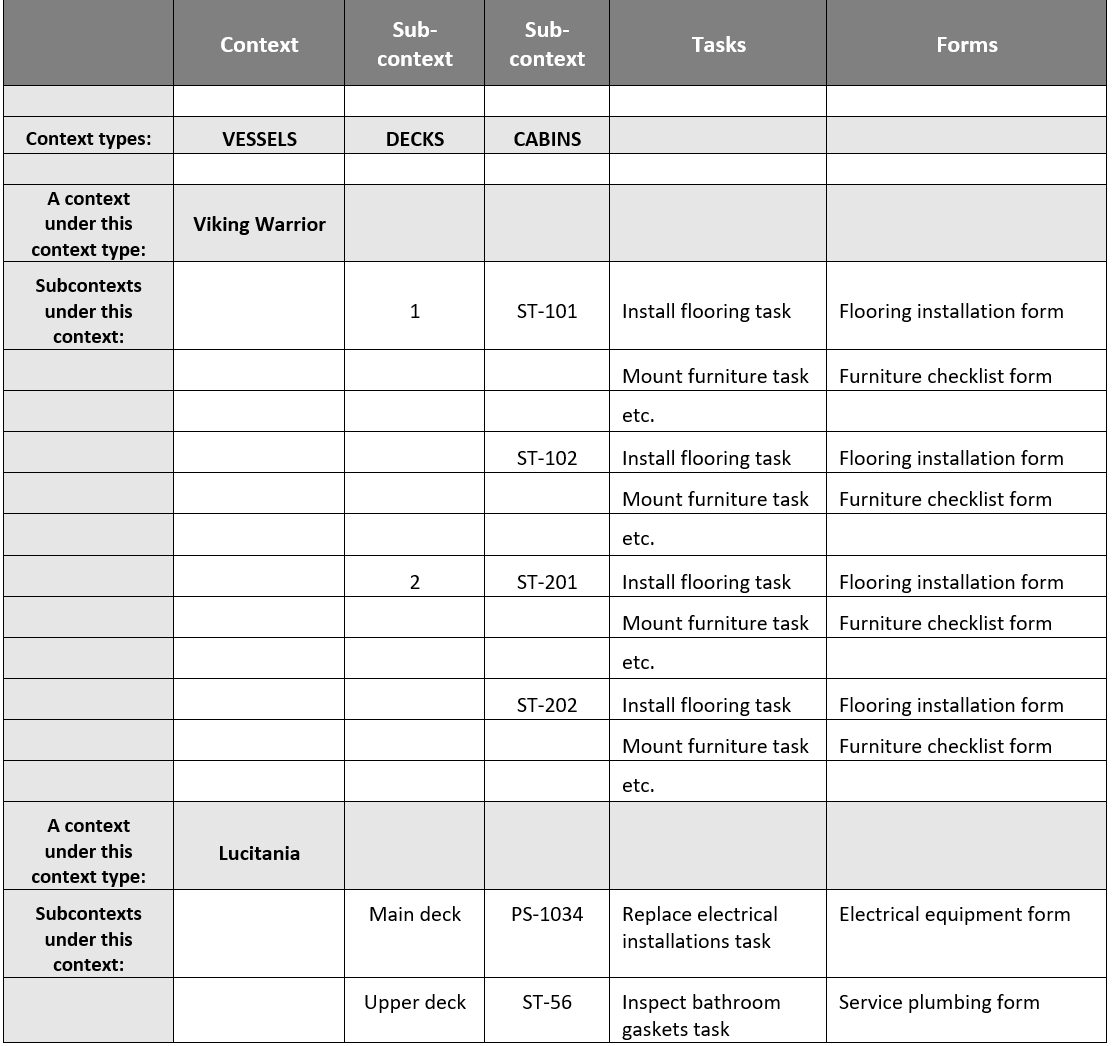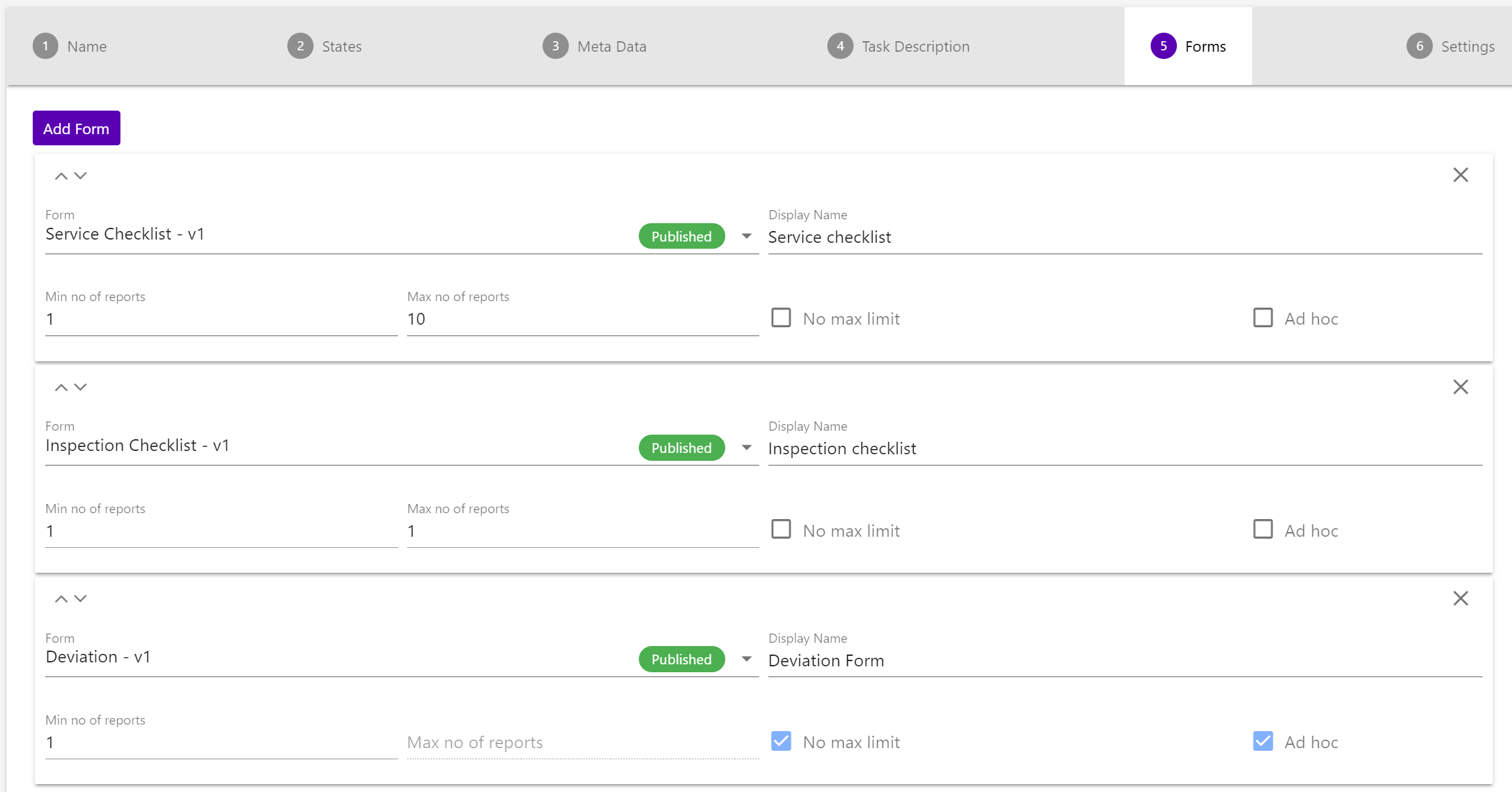Context types are general categories. They contain such settings as a list of forms, task templates, “context details” for prefilled data, limits to how many times a form can be filled out, and context states. A context defined under a context type may typically concern a specific inspection or service or work site or vessel.
What is the difference between a context and a context type?
Context types are general “umbrella structures” and may typically be called “Sales orders”, “Vessels”, “Countries”, etc. They contain settings for a type of work, such as a list of forms, task templates, “context details” for prefilled data, limits to how many times a form can be filled out, and context states.
Contexts are specific instances of contact types, e.g. work on a particular sales order, a specific vessel or a specific country. Usually a context type describes a long-term type of work while a context is an individual project with perhaps a time span of a few months.
A context may also have other contexts defined “below” it. Such contexts are called subcontexts. Subcontexts may also have subcontexts under them. The table below shows an example of this. The context type “Vessels” has two contexts; the ships “Viking Warrior” and “Lucitania”. Each of these have subcontexts “Decks” and these have subcontexts “Cabins”. Each cabin has several tasks and each task may have several forms:

A company/organization will typically have 1-4 context types. Each of these types may have many contexts, further subcontexts and many tasks created in them. For instance the context type “Countries” may have a subcontext called Province and a subcontext below this called Cities.
In the powerful Context Type editor available in the Dashboard, Admins can design their own context types. This editor is described in this chapter.

Read more about the daily management of contexts in the previous chapter; Managing: 7 Managing contexts.
Pages in this chapter:
8.1 Creating, editing, copying and deleting a context type
8.2 Adding States for a context type
8.3 Adding Meta Data for a context type
8.4 Adding Title and Description for a context type
8.5 Adding Task Templates for a context type
8.6 Adding Context Types for a context type
8.7 Defining Settings for a context type
8.8 Using the Context Type Code Editor
8.9 Configuring data inheritance from contexts to forms